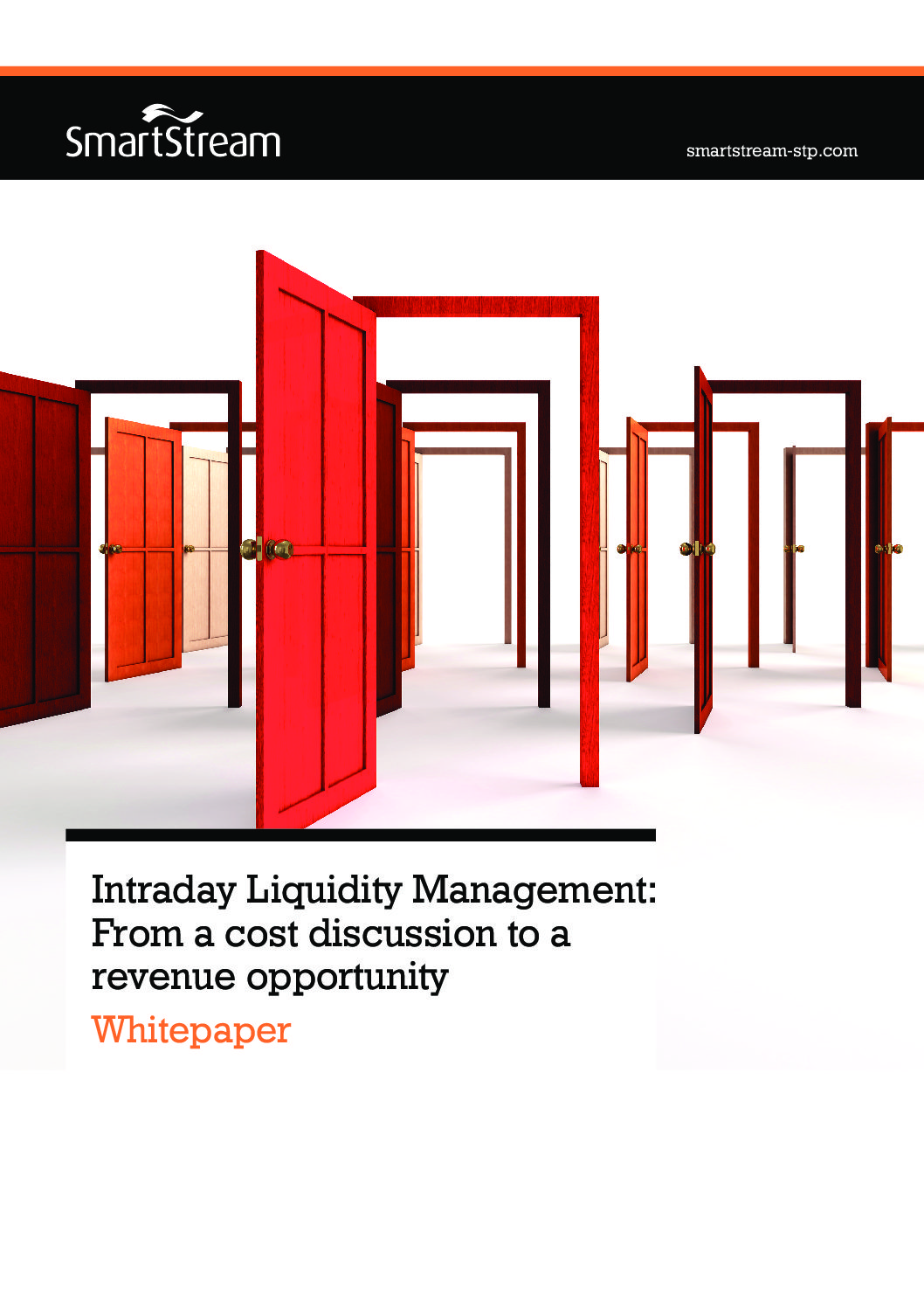“Liquidity is oxygen for a financial system.”
— Ruth Porat, former CFO and executive vice president, Morgan Stanley
By optimising their management of intraday liquidity, financial institutions can avoid the hidden costs associated with not managing and forecasting their cash and liquidity requirements correctly. Why maintain unnecessarily high levels of collateral or borrow at the last minute, when the liquidity needed to fulfil your settlement obligations can be sourced from other parts of the business that are not so constrained?
This paper will explore each of these points and discuss the opportunities that financial institutions can take to transform the intraday liquidity discussion, from one of an operational burden into one that adds true business value. It will also look at how institutions can leverage nextgeneration technologies like cloud computing, artificial intelligence and machine learning to achieve the goals that have long eluded them: real-time pro-active management of their global intraday liquidity.
During the financial crisis of 2007–2008, financial regulators quickly realised that the financial institutions under their supervision needed to do a number of things differently if they were to minimise the chances of a crisis of this scale happening again.
The crisis brought home a number of weaknesses in the global financial system, in particular the scale of the impact arising from the interconnected nature of liquidity. If one or more ‘systemically important’ financial institutions could not access liquidity to fulfil their payment and settlement obligations, then a liquidity shortfall in one market, or one institution, could quickly spread to markets and intermediaries in other jurisdictions.
In 2008, the Basel Committee on Banking Supervision (BCBS) published its seminal Principles for Sound Liquidity Risk Management and Supervision, which underlined the need for banks to “actively manage their intraday liquidity positions and risks to meet payment and settlement obligations on a timely basis.” That paper reinforced that global financial regulators want to see financial institutions moving beyond reporting their intraday liquidity positions (even with greater frequency) towards active management and control of their intraday liquidity. While this may appear to be another exercise in regulatory compliance, active intraday management offers many more benefits to both banks and their customers.
…financial institutions can avoid the hidden costs associated with not managing and forecasting their cash and liquidity requirements correctly.
A number of forces are now combining to transform active intraday liquidity management from a ‘nice to have’ to a ‘must have’. The global trend towards real-time or instant payments requires banks to have a real-time global consolidated view of their liquidity. Collateral is also becoming scarcer and more expensive. The days of cheap and abundant liquidity cannot be taken for granted anymore.







